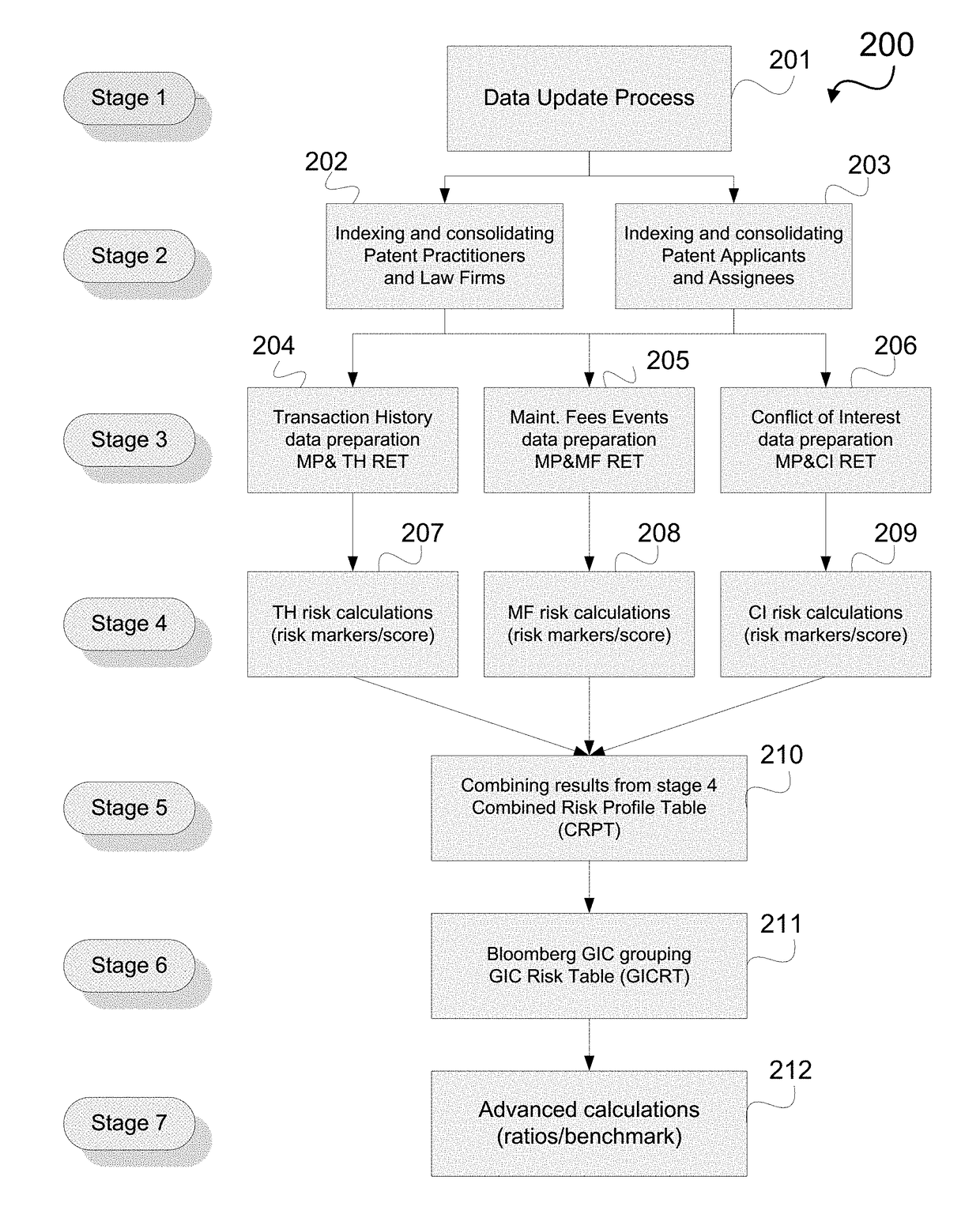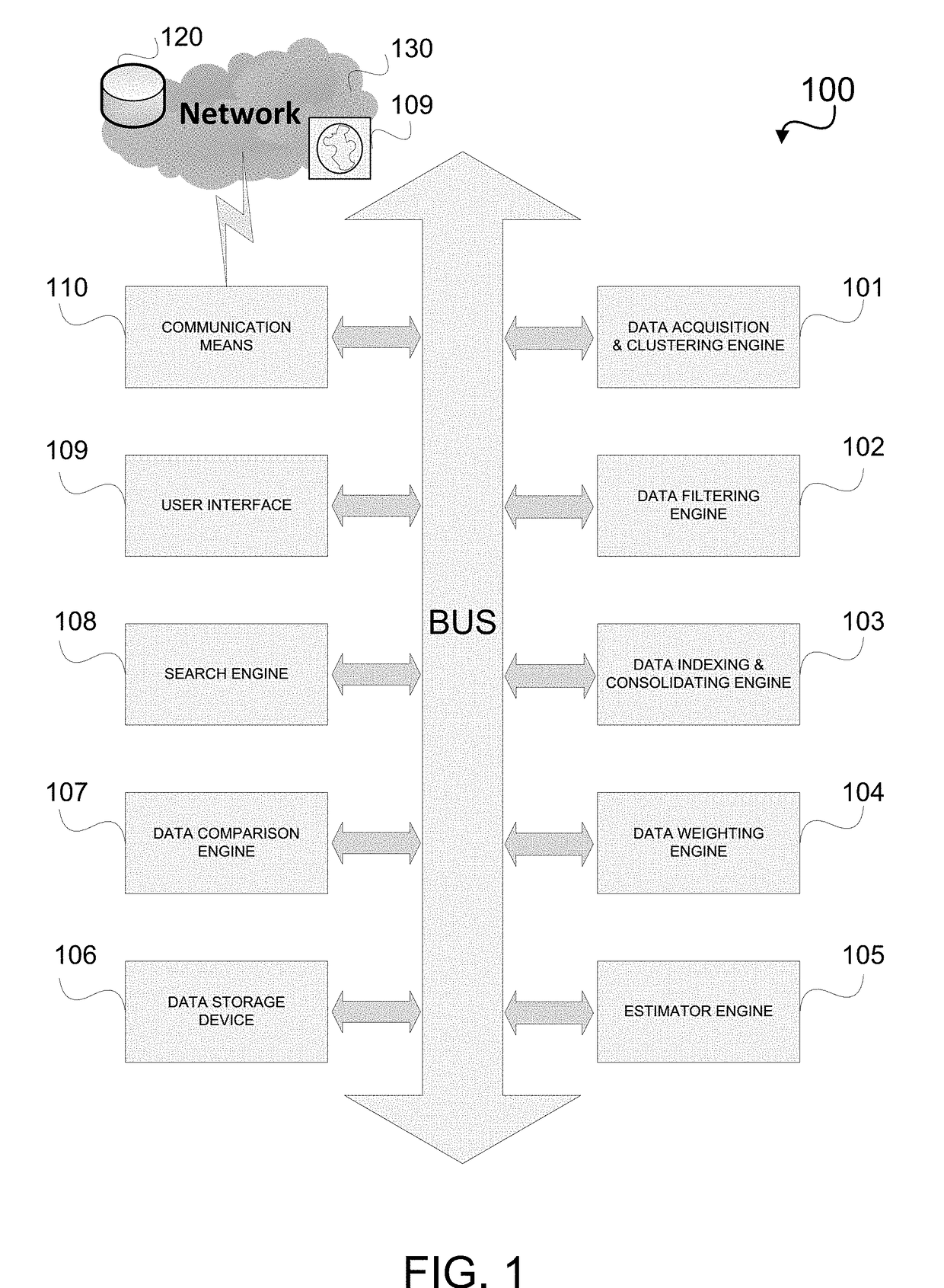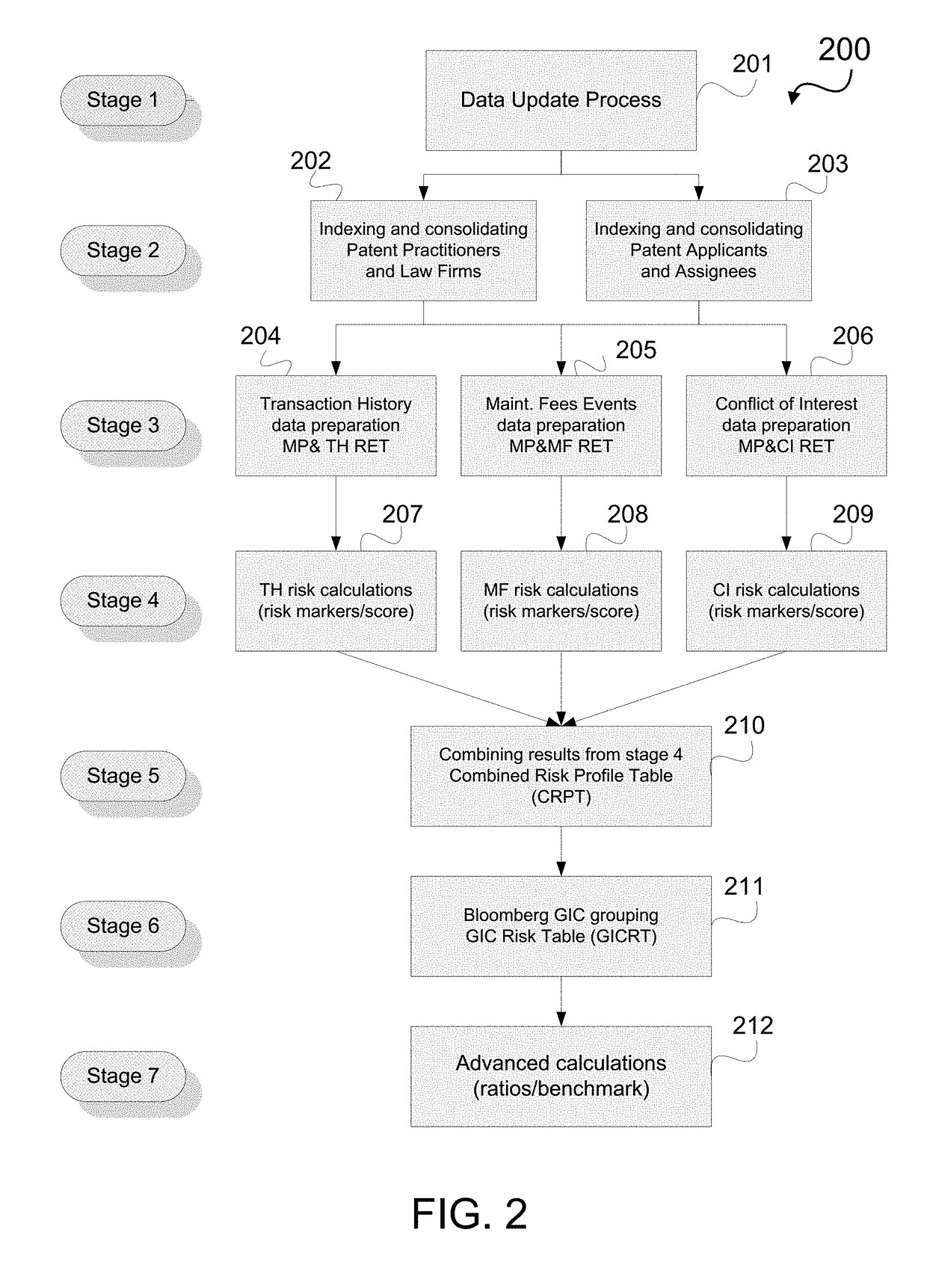Similar situation is occurring across the globe, contributing to larger and larger backlogs at the world's patent offices.
Therefore, the aggregate annual cost for obtaining, maintaining and enforcing patents in the United States is measured in billions of dollars.
However, proper
patent analysis, whether for purpose of licensing, infringement
enforcement, freedom to operate, technical research, product development, and others is a very difficult, tedious,
time consuming, and expensive task.
Accordingly, detailed patent related analysis is usually not done, or it is done in an ad hoc, unorganized, incomplete, inefficient, or ineffective manner.
Prosecution of a
patent application is a complex process extending over many months and involving going through many stages.
Due to the inefficiency of this process, clients must typically make decisions whether to pay the
annuity fees to maintain the applications / patents in good standing four to six months prior to the actual due date.
In some cases patent assets are intentionally abandoned by their owners because they are perceived to have little or no remaining value, or keeping the assets in good standing is no longer economically sound.
In other cases, the IP will lapse due to inattention, mistake, or professional negligence.
Particularly troublesome are periods of change such as merger of businesses, an acquisition of a business, a divestiture of a business, or sale / purchase of a new patent asset.
Patent owners can “revive” patents which have become abandoned due to lack of maintenance fee payments, however they must prove that the abandonment was unintentional or unavoidable and pay an extra petition fee.
There are many reasons for the above statistics including complexity of the patenting process itself.
While patent rights may be obtained in many cases by persons not skilled in those areas, there is no assurance that the obtained patent would adequately protect the particular invention.
The USPTO cannot recommend or aid in the selection of any particular attorney or agent or respond to any inquiries about “reliability” or “professional capability” of any patent attorney, agent, or firm listed on the USPTO register.
The procurement of patent rights is one of the most challenging IP processes in view of the complex and ever changing IP laws and Patent Office governing practices.
There is no
centralized database providing easy access to deadline correspondence, such as Office Actions for all the regional or national jurisdictions.
In some cases, due to missed deadlines or formal requirements, mistakes can lead to irrevocable loss of patent rights.
As with patents, trademarks are also subject to examination, missed deadlines, incorrect or invalid priority claims or incomplete applications and risk events that could potentially affect the liability of IP firms and IP professionals and the rights of their owners.
This process of obtaining and inputting the information from one national filing system into another is human managed, manual, and error prone.
The inability of users and
trademark owners to detect filing mistakes, some of which are
time sensitive and not correctable after a deadline, highlights the risk associated with correctly inputting foreign-based information.
By the same token, the
trademark examination process displays characteristics of
event risk such as an attorney having missed a deadline and unsuccessfully seeking to revive an abandoned application after the abandonment period has expired or the difficult to explain
high ratio of abandonments for failure to respond to notice of approval.
There is a significant shortage of IP specialists in view of the demand that has greatly increased the costs of hiring IP professionals.
In addition, the average time required to prepare and file an application is longer than ever due to the increased workloads on the agents and attorneys.
Moreover, since every application is unique, there is a
learning curve to it, and the process can become lengthy, expensive, and prone to errors.
Historically, cases of professional negligence, errors or omissions regarding IP work have been rather difficult if not impossible to track due to the complex nature of patent prosecution and
limited access to Patent Office records.
Furthermore, the USPTO does not provide statistical data for cases of incomplete applications or documents not adhering to the USPTO standards and requirements.
The PAIR system has been in operation for several years but still has some limitations.
Knowledge of a specific case number is required for example to access data and the output results are not easy to review.
While the tabs are reasonably well organized, the site is difficult to navigate within a conventional browser because many of the conventional function buttons do not operate in a consistent manner, resulting in resubmitting the query all over again.
In addition, the system frequently times out and forces the user to go through the
CAPTCHA test again, which is both frustrating and
time consuming.
However, empirically, these rankings have a limited scope and reliability.
First, there is no objective validation of the results of existing rankings.
Second, they fail to address in particular the unique behavioral profile of each firm.
Third, none of the rankings rely exclusively on an empirical methods and systems.
Fourth, there is no method or system for IP law providers that utilizes independent benchmarks to assess the quality of their work against that of their peers and competitors.
While insurers and brokers have access to past claims data as a basis to assess and predict risk, the tools to assess these risks are subjective and limited.
First, insurers and brokers have access to reported data belonging only to their clients; There is no publicly accessible empirical practice profile to the IP industry.
Second the data available to the insurance industry is limited to claims data and mostly claims driven.
There is no system to access and determine behavioral activities of current and potential policyholders.
Third, aside from the generally acceptable insurance risk principles, the IP professional liability insurance industry and each insurer relies only on subjective criteria.
There is currently no method or system to determine and assess empirical behavioral non-claims based data, including reportable incidents of policyholder professional activities before a patent and
trademark office, without having to continuously ask and inspect a policyholder's file.
The lack of
objective assessment of a law firm's empirical behavioral non-claims based data and reportable incidents of professional activities exposes a significant
black hole in the
risk assessment of a current and potential policyholder.
This
black hole in turn affects the ability of insurers and brokers to reliably review the current, and properly predict the
future risk behavior of a policyholder.
In turn this
black hole also reduces the ability for proper assessment of a
risk profile of a
client and reduces the potential for a better price premium.
However, there is no intention of
ranking law firms or patent attorneys based on the quality of their work and applying such data to a professional liability risk analysis, scoring their work, risk benchmarking and underwriting liability insurance
policy making.
However, the described method and system applies towards media industries (video, film, TV) rather than insurance and IP laws and practice with no provisions at all for rating IP-related professional liability risks.
 Login to View More
Login to View More  Login to View More
Login to View More 


